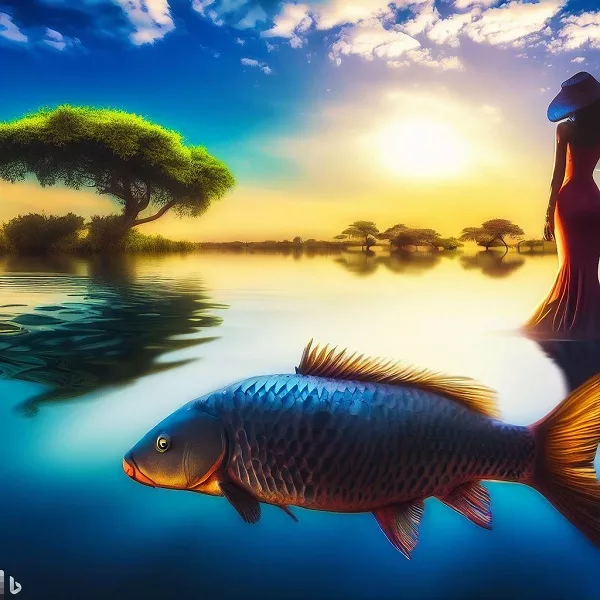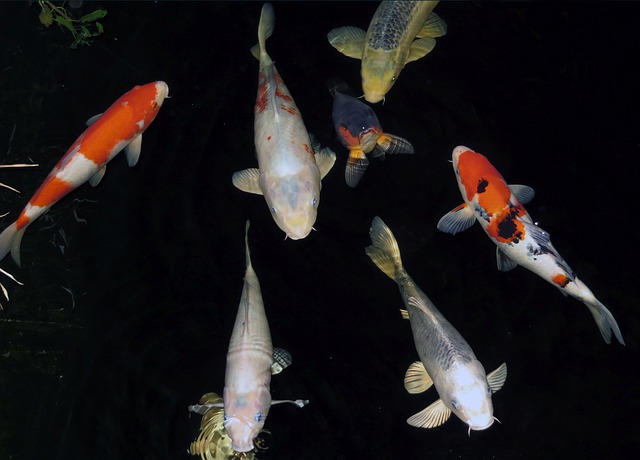
Koi carp, also known as Nishikigoi, are a colorful and ornamental species of fish that have captured the attention and admiration of people around the world. Originating from Japan, these fish have been selectively bred for centuries to develop their distinctive patterns and colors. In this article, we will explore the history, characteristics, and care requirements of koi carp.
History of Koi Carp
The history of koi carp can be traced back to the early 1800s in Japan, where they were first bred for their edible qualities. It wasn’t until the mid-1800s that koi carp began to be selectively bred for their colors and patterns. Over the years, koi carp have become increasingly popular as ornamental fish, and many enthusiasts have dedicated their time and resources to developing and perfecting different koi varieties.
Characteristics of Koi Carp
Koi carp are known for their distinctive patterns and colors, which are classified into various categories based on their appearance. Some of the most common patterns include Kohaku (white with red markings), Taisho Sanke (white with red and black markings), Showa Sanke (black with red and white markings), and Bekko (white with black, red, or yellow markings).
Koi carp can grow to be quite large, with some specimens reaching up to three feet in length. They are also long-lived, with an average lifespan of 20-30 years, though some have been known to live for up to 50 years.
Caring for Koi Carp
Proper care is essential for keeping koi carp healthy and thriving. Here are some tips for caring for these beautiful fish:
- Provide a suitable environment: Koi carp require a pond that is large enough to accommodate their size and swimming habits. A good rule of thumb is to provide at least 1000 gallons of water for each koi. The pond should also be deep enough to prevent the water from freezing over in the winter.
- Maintain water quality: Koi carp are sensitive to changes in water quality, so it is essential to monitor the pH, ammonia, nitrite, and nitrate levels regularly. You can use a test kit to check the water parameters and make adjustments as necessary.
- Feed a balanced diet: Koi carp require a balanced diet that includes protein, carbohydrates, and fats. You can feed them a mix of commercial koi food and fresh vegetables like lettuce, peas, and spinach.
- Protect from predators: Koi carp are vulnerable to predators like raccoons, herons, and cats. You can protect them by installing netting or fencing around the pond and adding hiding places like plants and rocks.
In conclusion, koi carp are a beautiful and fascinating species of fish that require proper care to thrive. By providing a suitable environment, maintaining water quality, feeding a balanced diet, and protecting them from predators, you can enjoy the beauty of these amazing creatures for years to come.
Koi carp – mysterious handfish for decorating your home pond
It’s hard to find more bright, interesting, and affectionate fish than koi carp. They are not afraid of people and are ready to show their colorful backs and fins at any time. Koi are curious and not shy, they gladly eat out of hands and even allow themselves to be petted. Koi are great in the pond as well as in the aquarium. They not only get used to people but can be friends with poultry, swimming close to ducks and geese when they are drinking water or floating on the surface.

All these qualities make koi carp the most desirable inhabitants of artificial reservoirs. But people who learn about these fish for the first time often have many questions:
- Where did these amazing fish come from?
- Where to buy koi carp and how to choose them correctly?
- What conditions do fish need to maintain energy, health, and well-being?
We have prepared the answers to all these questions for you.
History of the origin of koi
The first mentions of koi date back to the 18th century. Their images were found in the works of Japanese artists of that period. The word “koi” means “carp”, but the word homophone means “affection”, “love”. Originally, farmers raised koi in artificial ponds for food. At that time, koi fish were not brightly colored and in many areas were the only source of protein. Gradually, more colorful fish began to appear among the unattractive carps. They were not eaten but kept near the house, trying to breed newly spotted carps.
As a result of crossing selected specimens, more and more interesting representatives of bright colors with spotted coloration began to appear. The fish itself became very accustomed to human attention and became domesticated. The hobby gradually became popular and spread among the nobility, who tried to buy koi for entertainment and decoration of water bodies.
The world learned about these amazing fish after the world exhibition in Tokyo in 1914. In many countries, there are still organized show events with the demonstration of koi, of which there are about 80 breeds. Common colors of koi fish are: white, black, yellow, blue, red, cream, and spotted. learn more koi fish history
What conditions are needed to keep koi carp?
A pond designed for koi carp is best located away from noisy, dusty roads, playgrounds, and sports fields. In a quiet place near the house, in the garden, the koi fish will be much more comfortable. It is desirable that at the height of the sun the pond was shaded by trees.
For the fish to adapt well to new conditions, it is better to buy a juvenile koi carp in late spring or early summer. One fish requires about 3 m3, so the volume of the reservoir must be appropriate.
Otherwise, koi carp may not grow or become sluggish and sluggish. The depth of the pond should be at least 1.5 m, especially if you plan to leave the fish for the winter. To prevent the pond inhabitants from freezing in the winter the pond should be covered with foil.
The mobile fish koi constantly need clean and fresh water saturated with oxygen. Therefore, you should take care of the filtration system. You can also plant in a pond and arrange an additional cascade or stream to ensure water circulation.
Koi fish are omnivorous and unpretentious. In addition to specialized fish food, carp can eat white bread, vegetables, fruits, melons, soaked in water barley, peas. Worms, insect larvae, as well as thawed shrimp and mussels, can serve as a protein food. In total, the fish need to eat about 3% of their body weight per day. Koi also like to eat aquatic plants and often look for food on the bottom, raising the turbidity. Therefore, it is best to pave the bottom of the pond with rocks.
Looking for where to buy koi? Check out the best offers!
Koi fish, it’s quite expensive, but it will create a special look for your pond. If you want this fish but don’t have that kind of money yet, check out the best ways to make money from home. Also, selling fish – a big responsibility, because, in order to survive carps, the customer needs to buy only healthy and viable koi fish. Then they must be properly transported and, taking into account their delicacy, settled in a pond. It is very important to turn to experienced specialists who will advise on all issues and select good material.
Check out also koi fish meaning